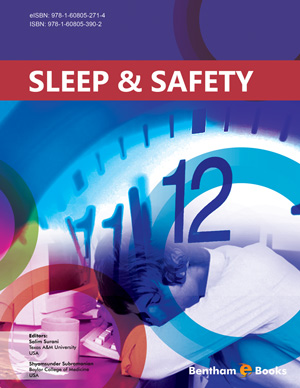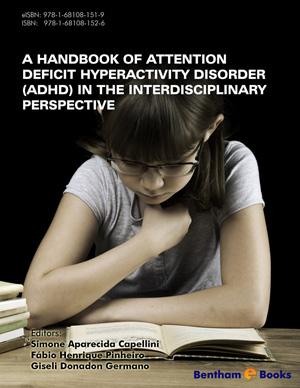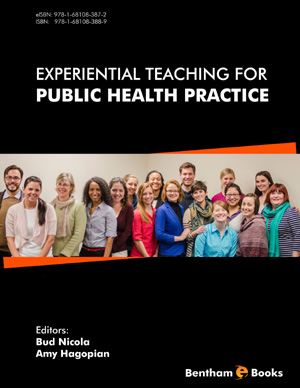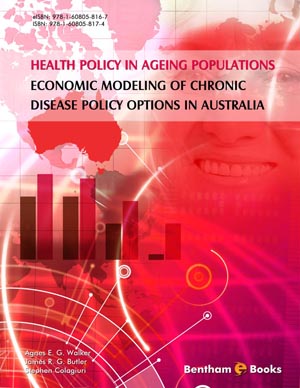Acknowledgement
Page: vi-vi (1)
Author: Salim Surani and Shyamsunder Subramanian
DOI: 10.2174/9781608052714111010100vi
Sleep and Circadian Rhythm Physiology
Page: 3-12 (10)
Author: Kannan Ramar
DOI: 10.2174/978160805271411101010003
PDF Price: $15
Abstract
The near 24-hour oscillations of brain and body functions, such as the core body temperature, secretions of endogenous hormones, and the sleep-wake cycle, constitute the circadian rhythm. These rhythms are generated by intrinsic molecular mechanisms in the suprachiasmatic nucleus (SCN) neurons and are modulated by receiving input from light, activity, sleep-wake state, and other environmental cues. There is now clear evidence identifying the SCN as the master pacemaker regulating these rhythms. The SCN responds to environmental cues by sending outputs to various regions of the body to regulate the timing of behavior and activity, endocrine cycles, body temper ature, and the sleep-wake cycle. Also, dynamic interaction exists between the circadian rhythm and the homeostatic sleep drive that regulates the consolidation of sleep and wake performance. Disruption of this interaction occurs during shift work, jet lag, or other circadian sleep disorders, such as advanced or delayed sleep phase syndrome, and often leads to sleep-wake disruption.
Sleep Deprivation: Pathophysiology
Page: 13-24 (12)
Author: Vidya Krishnan and Dennis Auckley
DOI: 10.2174/978160805271411101010013
PDF Price: $15
Abstract
Sleep deprivation can result from poor quality of sleep and/or reduced sleep duration. Sleep deprivation can be categorized as acute total, acute partial, and chronic partial sleep deprivation depending on the amount and chronicity of the sleep loss. Recent research has emphasized on the impact of chronic partial sleep deprivation on health and well-being, suggesting this type of sleep deprivation is clinically relevant in modern society. Chronic partial sleep deprivation is estimated to affect between 7.5-20% of the general population and has numerous underlying causes, though recent studies associate the duration of work hours most strongly with loss of sleep. The effects of both acute and chronic partial sleep deprivation on the physiology of major body systems are discussed in this chapter with an emphasis on emerging data regarding chronic partial sleep deprivation. Neurobehavioral, cognitive, autonomic, cardiovascular, endocrinological, and immune system consequences of sleep deprivation are reviewed.
Sleep Deprivation: Cardiovascular and Metabolic Effects
Page: 25-32 (8)
Author: Vishal Sawhney and Philip Alapat
DOI: 10.2174/978160805271411101010025
PDF Price: $15
Abstract
Sleep deprivation has been associated with significant adverse cardiovascular consequences. Contributing to this association is the development of hypertension, diabetes, and obesity, each of which can be linked with sleep deprivation. Numerous epidemiological studies conducted around the world have noted a correlation between cardiovascular disease and sleep deprivation. This association appears to be stronger in women. Mechanisms that explain this association include endothelial dysfunction and systemic inflammation, which have been experimentally associated with sleep deprivation. Additionally, increased sympathetic nervous system activity and decreased coronary flow velocity reserve are likely to contribute to the sleep deprivation associated cardiovascular disease. Similar mechanisms underlie the association of sleep deprivation and the development of hypertension. Obesity and diabetes mellitus also appear to be associated with sleep deprivation, with hormonal aberrations being the primary contributors to the association. Obesity may be associated with sleep deprivation-related reduced levels of leptin and elevated levels of ghrelin, both of which cause appetite stimulation, especially for carbohydrate rich food. Alteration in levels of growth hormone, cortisol, and thyroid stimulating hormone due to sleep deprivation affects glucose metabolism, likely leading to the development of impaired glucose tolerance and diabetes mellitus.
Health Consequences of Sleep Deprivation: Neurocognitive and Psychiatric Disorders
Page: 33-51 (19)
Author: Erik K. St. Louis
DOI: 10.2174/978160805271411101010033
PDF Price: $15
Abstract
The relationship between sleep deprivation, sleep disorders, and neurocognitive impairments is bidirectional. Sleep deprivation in neurologically normal individuals may cause cognitive and psychiatric impairments. Primary sleep disorders may also mediate sleep fragmentation that causes neuropsychiatric symptoms or aggravates comorbid neuropsychiatric conditions. This chapter reviews the importance of normal sleep to normal neurocognitive functioning and performance, considers the impact of acute and chronic sleep deprivation on cognitive faculties in neurologically normal individuals on vigilance, psychomotor performance, and mood, then reviews the current understanding of cognitive and psychiatric symptoms and problems characteristically resulting from, or aggravated by, common sleep disorders, focusing especially on cognitive impairments associated with sleep-disordered breathing. A practical clinical approach towards assessment of cognitive impairment and psychiatric illness in sleep medicine practice is then outlined, focusing on bedside evaluation of the patient and important diagnostic and therapeutic implications. Recognition of the frequency and morbidity of cognitive and psychiatric symptoms caused by sleep deprivation and sleep disorders is growing, and comprehensive care in sleep medicine requires that practitioners should consider and address neurocognitive and psychiatric manifestations in their patients.
Sleep and the Immune System: Implications for Health and Mortality
Page: 52-59 (8)
Author: Diwakar Balachandran
DOI: 10.2174/978160805271411101010052
PDF Price: $15
Abstract
Adequate sleep is an important part of a healthy and productive lifestyle. However, chronic sleep restriction is very common. American adults only sleep an average of 6.85 hours per night. Furthermore, only 37% of Americans report taking more than 8 hours of sleep each night, and 31% of adults report sleeping less than 6 hours per night. Competing priorities including long work hours, family needs, and increased 24-hour access to visual media play a role in this deficit of sleep. It has been shown that sleep restriction and disruption can result in excessive daytime sleepiness and reduced neurocognitive function. More recently, it has been demonstrated that this degree of sleep loss may have long-term health consequences and is associated with premature death, cardiovascular disease, the development of diabetes, and cancer. The health consequences are postulated to be due to disruptions in sleep and changes in circadian rhythms, perhaps under the direction of inflammation and immune mediators. This chapter will explore the recent developments in understanding the interactions between sleep, biological rhythms, the immune systems and their consequences for both health and disease. We will begin by examining studies which evaluate the behavioral and physiological consequences of sleep deprivation. Then we will explore the possible link between these observations and inflammation and immune regulation. Finally, we will look at the potential contribution of these disruptions to disease.
Obstructive Sleep Apnea and Safety
Page: 60-66 (7)
Author: Shyam Subramanian
DOI: 10.2174/978160805271411101010060
PDF Price: $15
Abstract
Sleep apnea has emerged as one of the leading causes of excessive daytime sleepiness and is consequently being increasingly recognized as a strong risk factor for drowsy driving and related motor vehicle accidents. Besides the morbidity associated with this, the issue also has tremendous economic implications with costs estimated to be in millions of dollars annually. Studies demonstrate that continuous positive airway pressure (CPAP) therapy is effective at predictably and consistently mitigating the risk of sleep apnea-related crashes and is also proven to be a very cost-effective strategy in reducing the financial costs. Numerous regulatory and legislative issues emerge when viewed in the context of licensure requirements for individuals with a known sleep condition, particularly from a standpoint of how best to ascertain their compliance with therapy. Issues become even more critical as well as complex when applied to the subset of drivers who operate commercial vehicles. Guidelines from expert panels are helping concerned authorities to outline a framework to license and monitor commercial motor vehicle operators
Shift Workers and Sleep
Page: 67-83 (17)
Author: Salim Surani
DOI: 10.2174/978160805271411101010067
PDF Price: $15
Abstract
The modernization of our society has resulted in the availability of services 24 hours a day in many areas, giving birth to shift work. It has led to an improvement in production, better utilization of industrial equipment, and availability of resources around the clock. In addition to its advantages, shift work can also lead to several disasters and safety issues due to the alteration of the circadian rhythm, sleep deprivation, and sleep fragmentation. This chapter discusses the shift work system, biological rhythm misalignment due to shift work, safety related issues due to shift work, and health-related consequences secondary to the shift work system.
Sleep Deprivation Among Health Care Workers
Page: 84-93 (10)
Author: Salim Surani and Shyam Subramanian
DOI: 10.2174/978160805271411101010084
PDF Price: $15
Abstract
Medical residents have traditionally long working hours, compounded by uninterrupted shifts, and this combination leads to significant sleep deprivation. The training of new physicians has, in the past, been designed in order to provide maximum exposure to patient and surgical cases with no regard to circadian rhythms, sleep deprivation, or fatigue-related issues. Nurses, on the other hand, have been exposed to long hours and varied shifts in recent years due to excessive demand and severe shortage. Health care providers working for extended hours and variable shifts receive little or no education regarding fatigue countermeasures, sleep needs, and sleep hygiene. Sleep deprivation and variable shift work-related challenges have led to life-threatening errors, raising the concern for safety among health care providers over the past 2 decades. This chapter discusses sleep-related safety issues among resident doctors and nurses.
Sleep and Driving
Page: 94-109 (16)
Author: Shwetha Bopparaju and Shyam Subramanian
DOI: 10.2174/978160805271411101010094
PDF Price: $15
Abstract
Driving a motor vehicle is a multifaceted task requiring a healthy combination of alertness with skills pertaining to distinct cognitive, perceptual, motor, and decision-making functions. Sleepiness can primarily affect these skills in our population to varying extents. Thus, it is common in patients with various sleep disorders to be consequently present with excessive daytime sleepiness, which in turn is associated with a higher incidence of road traffic accidents (RTAs). Driver fatigue is a widespread and serious problem. Studies have indicated that more than 20% of road accidents are related to driver sleepiness, with a majority being associated with occupational or commercial drivers. Times of day, or circadian, effects are profound, with sleepiness being particularly marked during night shift work and driving home afterwards. However, the only safe solution to driver sleepiness is to stop driving and take a short nap. Education of employers and employees is an essential safety measure regarding planning journeys, the dangers of driving while sleepy, developing self-awareness about sleepiness, and driving at vulnerable times of the day.
Sleep and Aviation Safety
Page: 110-116 (7)
Author: Siva Ramachandran
DOI: 10.2174/978160805271411101010110
PDF Price: $15
Abstract
Almost 5% of aviation mishaps in civilian and military flights are related to fatigue from insufficient sleep. Multiple factors are responsible for this, including insufficient clarity on pilot scheduling, short layovers, night flights associated with circadian trough sleepiness, ultra-long distance flights across multiple time zones, and lack of consistent guidelines on specific fatigue countermeasures including in flight naps. Space exploration with alterations in the day-night cycle, mission alertness requirements, cramped crew space, noise, and weightlessness significantly impact the duration and quality of sleep. This remains a high priority for NASA's aerospace research and safety. There are also differing opinions between individual airlines and civilian and military aviation with respect to developing consensus guidelines for aviation safety measures. This chapter reviews current evidence and specific mandated guidelines for aviation safety, including the role of hypnotic and stimulant medications.
Sleep Among the Military
Page: 117-129 (13)
Author: Salim Surani
DOI: 10.2174/978160805271411101010117
PDF Price: $15
Abstract
Modern society has placed several stressors in our lives, and with an increase in global conflict, military personnel live in a constant state of alert. This has been further complicated by urban warfare and terrorism threats, leading to a level of constant stress, sleep fragmentation, and sleep deprivation. In the combat zone, military personnel are required to maintain their vigilance around the clock in order to deal with adverse situations, which can lead to sleep deprivation and cause cognitive impairment and, in turn, increases the risk for the safety of their company and themselves. This chapter addresses sleep and fatigue and their tolls on the physical and cognitive function of military personnel as well as countermeasures to fatigue.
Sleep and Safety in the Elderly
Page: 130-145 (16)
Author: Salim Surani and Swetha Bopparaju
DOI: 10.2174/978160805271411101010130
PDF Price: $15
Abstract
Sleep is vital for good health in all individuals. Sleep disorders are highly prevalent in our society, with a majority of them related to reversible etiology. There has been an increasing predominance of abnormal sleep hygiene in the elderly due to changes in the circadian rhythm, medication use, and other comorbid conditions in this population. These factors commonly result in tiredness, cognitive abnormalities, work accidents, and potentially, a safety hazard to the older population. The crux of the problem lies in the fact that the condition is generally under recognized and inappropriately treated and, thus, it is imperative that firm steps should be taken not only to screen patients and promptly initiate therapy but also to understand the physiology of sleep loss in the elderly and encourage the practice of nonpharmacological measures as a primary mode of therapy while maintaining a conservative and minimalist approach towards pharmacological treatment to enhance a healthy lifestyle in these individuals. Patients and physicians should be educated regarding the importance of healthy sleep hygiene and the prompt use of nonpharmacological measures for treatment.
Pediatric Sleep Disorders: Safety, Ne urocognitive and Behavioral Issues
Page: 146-155 (10)
Author: Neelam Konnur and Shekhar Ghamande
DOI: 10.2174/978160805271411101010146
PDF Price: $15
Abstract
Sleep disorders are common in children and adolescents. They have diverse daytime manifestations which may go unrecognized. The negative impact on learning, growth, mood, and behavior can exact a serious toll on both children and their parents. Symptoms of childhood sleep disorders may be commonly dismissed by parents and mistakenly diagnosed by health care providers. This chapter focuses on, and is limited to, a discussion of the safety issues and distressing behavioral and physical manifestations associated with pediatric sleep disorders.
Sleep Deprivation: Legislative and Regulatory Issues
Page: 156-164 (9)
Author: Christopher Miller and Kingman P. Strohl
DOI: 10.2174/978160805271411101010156
PDF Price: $15
Abstract
The “safety” dimensions of sleepiness require interactions and assessments by the physician that go beyond the clinical encounter and have garnered interest by legislative bodies and regulatory agencies. This review is a brief accounting of certain specific policies, procedures, and judicial instructions developed to address issues of drowsy driving. The major body of work involves commercial and noncommercial assessments, but increasingly, sleepiness has become a recognizable issue for the design of service hours and for management of human resources. The insertion of this literature into appropriate regulations and remediative measures is appearing in state noncommercial licensure as well as trucking and aviation licensure and health maintenance. The challenge is now for legislative bodies to design policy to address and mitigate excessive sleepiness in an appropriate and cost-effective manner.
Index
Page: 165-168 (4)
Author: Salim Surani and Shyamsunder Subramanian
DOI: 10.2174/978160805271411101010165
Introduction
The National Highway Traffic Safety Administration (NHTSA) estimates that upto 4 percent of all fatal crashes are caused by drowsy driving and as many as 100,000 patients deaths per year may be due to fatigue related medical errors by doctors and nurses in the United States. These problems of sleepiness, fatigue, and the contributions of inadequate sleep and night work, to human error and accidents have high costs in both lives lost and economic impact. This e-book covers the physiology of sleep, the pathophysiology of sleep deprivation, the relationship to daytime alertness and fatigue, the relevance of sleep-related fatigue in various industry and occupational settings and its importance as a public safety issue. The e-book should serve as a useful reference to readers interested in sleep research and public health and safety management.












